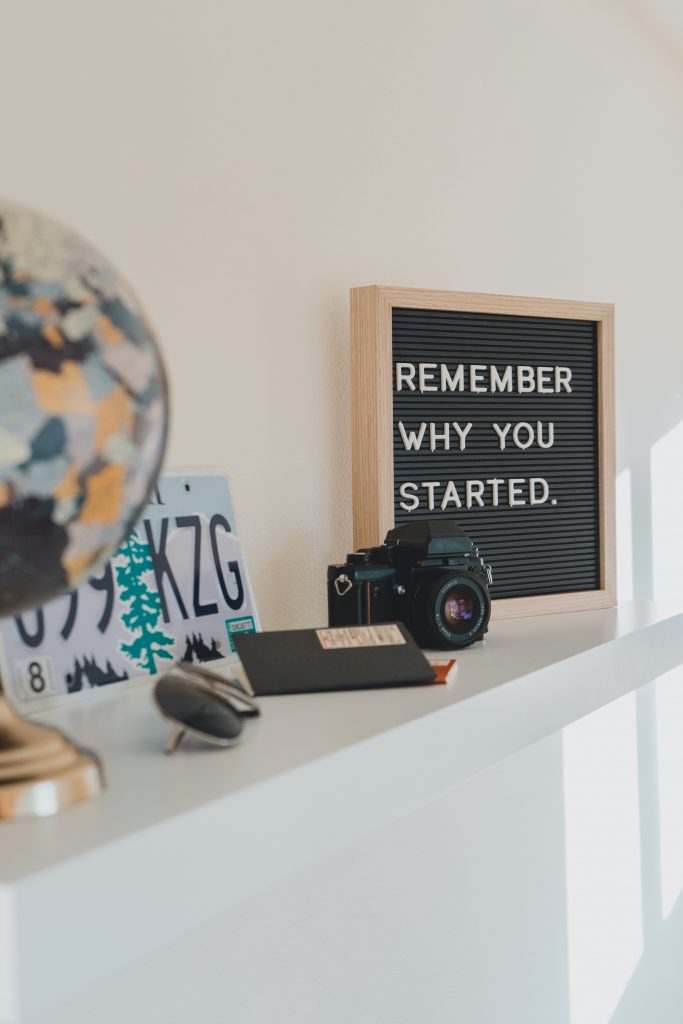Therapy Insights: Community Health & Black Mental Health with Shaunae Tolson, LPC
Black Mental Health & Black History Month
In this Care Insights we spoke with Shaunae Tolson, LPC. Shaunae is a counselor who offers virtual therapy services to Texas, and is part of the care team at Heading Health.
Shaunae shared with us her inspiration for entering the field of mental health, her perspective on providing mental health care and receiving mental health care as a Black woman, and what she feels is the duty of the medical system and those in health care when it comes to not only serving individuals but also being the change she hopes to see for all patients.

February is Black History Month, a month that serves to recognize the contributions and achievements of Black individuals, with special focus on sharing important stories of the people and moments in Black history that have and continue to play a central role in U.S. history, and offers a powerful reminder that Black culture is American culture. In our conversation with Shaunae, she shared what this month means to her and how Black Mental Health should be part of the conversation, this month and every month.
“Well, obviously, being a Black woman I grew up black with all the challenges that come with growing up Black. And for me, and many people in my community, mental health was not mentioned or talked about or acknowledged. The closest thing you get to counsel is ‘go to church’, ‘give it to God’, or you’re told to pray or talk to the pastor,” Shaunae reflects.
“I think that’s why it’s important to talk about Mental Health when we talk about Black History.”
Mental Illness, PTSD and Survival
Shaunae grew up in what she called a ‘rough, inner city neighborhood’, and recognized that most people in her community were experiencing significant challenges. Now, as a therapist she is able to empathize with her clients who have been raised in similar circumstances. Shaunae shared that she feels that what may be labeled as ‘mental illness’ is often survival mechanisms and habits for coping. The impact of living under extreme stress for a prolonged period of time often creates mental and physical health symptoms that aren’t always obvious, because surviving becomes another part of daily living.
“I was an inner city kid. And I feel like a lot of inner city kids suffer from PTSD. For me, having family members that have gone through the legal system, we suffered, but we had to suck it up. No one really talks to inner city kids about the exposure they have had to really difficult circumstances, and what impact witnessing these things is having on them”
“What I know now about PTSD, as a counseling professional, is that it’s just survival tactics really. You’re often forced to learn them and sometimes just don’t have a choice in the matter. It can come with aloofness, a numbing, pretending like you’re unbreakable, or coming across as standoffish or disrespectful. But what people need to realize is that at the end of the day – basic needs always win. You do what you think keeps you safe.” Shaunae shares.
Shaunae’s personal experience concerning the difficult nature of mental health diagnoses, and even misdiagnoses, when dealing with trauma echoes broader issues of racial disparity in mental health care. A 2018 study from Rutgers University compared the diagnoses given to over 1600 people and concluded that very often Black men with a diagnosis of schizophrenia were much more likely than non-Black individuals with a schizophrenia diagnosis to also qualify for a diagnosis of major depression and PTSD. Yet, the screening for mood disorders and diagnosis of major depression was often not given. Discussion of this study also noted the finding suggests a bias towards screening Black individuals for psychotic symptoms over mood disorders.
Undertreated major depression is significant, as it is a misdiagnosis of schizophrenia, in both instances the potential for inappropriate treatment or undertreatment comes with significant health risks.
“You know with police brutality, lack of opportunity, crime, and a lot of what happens in rougher neighborhoods relates to people doing what they know to do based on the demands of their environment. And it takes time and perspective, and really the ability to step away, to realize that sometimes coping techniques are dysfunctional, and understand that your feelings do matter. But it’s hard to form that sort of perspective if you’re stuck or you’re unsafe. You have to survive first. Mental health or emotions are not going to be seen as a priority, because they’re emotions. They don’t feed you, put clothes on your back or keep the electricity on.”
The challenge of offering support to an individual when societal factors play a large role in a patient’s suffering is an aspect of her job that Shaunae embraced, ”I think that’s why it’s such a passion of mine. The work is complicated because I’d often have to say to someone, ‘You’re right, you still have to survive, unfortunately, because of the cards that you were dealt and the situation that you’re dealing with’.”
Doing Healing Work In a Broken System
The resilience of the people Shaunae supported in her time in community mental health stoked a passion for her career in counseling. When Shaunae reflected on her time in community mental health she shared that one of the most difficult aspects of that work was not being able to change the environment she was sending people back into after their session, but that community centers were the heart of change for neighborhoods like the one where she raised.
“I’m a huge advocate of community centers,” Shaunae shared excitedly.
“I worked in community mental health. So, I dealt with, you know, America’s true people. And I’ve heard a lot of things, and witnessed a lot of emotion that stem from really horrible experiences. Even though I couldn’t necessarily change their experiences or what they were going through, I saw the impact of just being heard, and having a safe space for letting it all out,” Shaunae remarked.
“We can’t fix the situation. Most times we have to send them back to where they came from and they have to continue to survive. But I don’t think people understand the impact of just having a brief moment of not having to worry.”
Community centers are often frontline areas of support for low-income people who live in inner city environments. While the American Affordable Care Act did begin to close the insurance gap, Black individuals still trail behind in coverage, and are much less likely to have private insurance making access to quality mental health care difficult and cost prohibitive. Safe spaces where counseling, support groups, social services, and recreation, become centrally important in providing low cost and zero cost access to meaningful access.
“When you’re worried about basic needs emotions are not going to be a priority. But there can also be some acknowledgement and support. And that goes a long way. Just a space for releasing is impactful.”
Need for Black Mental Health Professionals
When asked about her perspective on receiving mental health counseling for someone of the same race, Shaunae’s response was nuanced and thoughtful. It was clear this is a topic she’s considered often in her own life and in her career.
“I have a mixed perspective. It’s not always necessary for your therapist to look like you, but sometimes it can help. Some of the greatest therapists I saw were white women. I never felt like they couldn’t help me because they didn’t understand my struggle or that I couldn’t meet with them, but I also will add that at the time I was already studying this work. So I had some awareness. But, in reflecting back, the biggest reason I was able to navigate [having a white therapist] was because growing up my mom always made a way to ensure we were able to go charter schools. I was not a stranger to being in predominantly white environments.”
One important aspect of reducing stigma and improving care and access for the Black community relates back to a greater need for diversity in the mental health field in general. The APA reported that as of 2015 the field of psychology was less diverse than the nation as a whole, and that only 4% of professionals in the psychology field identified as Black. While beneficial care is not reliant upon racial, gender, or sexual orientation matching between patient and provider, there are real benefits to care when a patient feels more comfortable building a rapport with someone of their own background.
In Shaunae’s own therapy journey, connecting with a therapist who was a Black woman made a difference for her. She shared, “When I got my first Black therapist, that shifted things for me. I can’t even pinpoint the exact shift, but it took my treatment to a deeper level. Having that connection of culture was significant. A lot of the things that I explore with my current therapist, who is a Black woman, are also things that I explored with white therapists. However, now with that shared connection I’ve been able to revisit those topics and process the experiences more deeply. Her understanding of the Black experience, and being able to ask certain questions about the Black experience and being a Black woman especially, helped.”
Rapport is a significant indicator of therapeutic success, even more so than a specific theory or modality used in session. Research on cultural competency and its relationships to therapeutic outcomes is gaining more traction though a precise definition of what it means to offer culturally competent care is still difficult to pinpoint. But, research shows that providers can unintentionally contribute to increased racial and ethnic disparities in care, and on the whole the system needs improvement. Though the fact remains that racial and ethnic minorities are less likely to receive psychological care than the white majority, and in order to meet the need more BIPOC are needed and white providers need to become more immersed in providing care to a culturally diverse patient population.
“For Black people who may be resistant to therapy, or nervous to talk, having someone that they immediately feel like they can trust and relate to might make a big difference. Someone of a different race, who’s just very textbook, just not aware and simply feeding what CBT told you to say if a client says a certain thing – that’s a turn off.”
Given that the overwhelming majority of psychology professions are white there is a tremendous need for learning and education around what it means to offer culturally competent, sensitive, and relevant care. Shaunae shared, “Clients who have come to me after experiencing a white therapist or someone who just wasn’t culturally aware said it was off putting and it made them quit there because to them it’s like, ‘I don’t need you to tell me what the textbook said or to watch calming soothing videos, I don’t need that, I need you to hear me and know what I’m talking about.’”
How Mental Health Practices and Providers Can Support Change
“When it comes to changing Black Mental Health I think first of access. Access provides the opportunity for a powerful trifecta: Awareness, Perspective, and Trajectory. Awareness comes through psychoeducation and therapy to unlock the path to psychological freedom. This leads to a shift in perspective, and that unlocks hope. Hope is needed in order to change the trajectory of one’s life; a life that may have seemed unattainable.”
Facilitating space for hope can be a change with insurance gaps, and difficulties in access – even with the advent of virtual therapy. When asked what she thinks mental health practices and providers could do to influence systemic change and promote greater access, Shaunae had very concrete ideas of what she’d like to see.
“Educational assistance, and medicaid. I don’t know the logistics behind convincing more companies to accept medicaid, or how to improve the care that comes with it, but when I was working in community mental health accepting Medicaid was huge. Unfortunately when it comes to medicaid, people don’t always get the best care, and we need to change that too. I believe mental health practices and providers have a responsibility to figure it out.”
In the short term, Shaunae challenged practices and providers to align and support organizations already offering care to those who need it.
“I remember when I was growing up in the projects there was a community center. It was just a place for us to escape. It had recreational activities, and people we could talk to if we needed. Simple things like that. Mental health care practices should support the places in the community that are already doing the work. Centers are monumental because there’s no transportation barrier, and financial barriers aren’t there. Growing up, I didn’t know what yoga or Pilates or meditation was. Community centers are starting to bring some of these things that we, even I, preach to our clients.”
From Shaunae’s perspective an action everyone who cares about improving mental health care equity can do is to find ways to support safe spaces, “We need places where at least you get a break, because we all need a break.”
Want to find out if Heading is right for you?
Complete our consultation form and an intake specialist will get in touch.














 dderall, Ritalin, and Concerta are the standard treatments for ADHD. These medications work by increasing chemical messengers called dopamine and norepinephrine in the brain’s central nervous system. While highly effective, these medications aren’t the best choice for everyone. Some individuals have other conditions that stimulants can exacerbate, such as:
dderall, Ritalin, and Concerta are the standard treatments for ADHD. These medications work by increasing chemical messengers called dopamine and norepinephrine in the brain’s central nervous system. While highly effective, these medications aren’t the best choice for everyone. Some individuals have other conditions that stimulants can exacerbate, such as: Decrease distractions: Make a point to limit easy distractions. Make a list of common distractions and avoid them while working on important tasks. Some common anti-distraction strategies may include setting your phone and computer to do-not-disturb mode and avoiding working around your TV.
Decrease distractions: Make a point to limit easy distractions. Make a list of common distractions and avoid them while working on important tasks. Some common anti-distraction strategies may include setting your phone and computer to do-not-disturb mode and avoiding working around your TV.  Aside from diet, exercise has been investigated as a potential tool for alleviating the symptoms of ADHD. For example, a recent
Aside from diet, exercise has been investigated as a potential tool for alleviating the symptoms of ADHD. For example, a recent